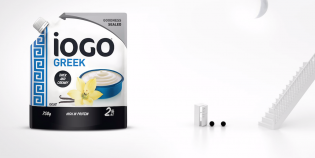A long, long time ago in a galaxy far, far away, there was an artfully conceived and closely-guarded secret. It was a sacred text that barely covered one page, and each word was lovingly pondered and hotly debated. Many a poor slave in its service was thrown to the low-circling headhunters after insufficient reverence. It was named The Creative Strategy.
Whatever happened to it, I wonder? These days, tentative questions regarding its existence are met with surprise, confusion and even mild distaste. A creative director I know had the temerity to request even just a brief look and was told “What more do you need to know? You were in the meeting.” Once, anxious to do some homework before research to assist the development of advertising, I asked if we might possibly have a look at the creative strategy and was told it was far too early to be worrying about that. It would be developed following the execution. This was said so categorically and with such confidence that I was left with a panicked feeling that, after years of denial, I was indeed losing it.
But then I started to discover others like me. Some were ad agency veterans (over 40) who fussed about the young things coming up the ranks who, it seemed, “had never even heard of it,” or clients who had heard about it but worried they weren’t supposed to ask about it anymore.
Now, to be fair, there are imitations and brave attempts. There is The Brief, for example. The Brief, as far as I can make out, is something that could be summarized as “Here’s roughly what we need to do with no time and very little money.” And there are those objectives-“Help consumers rediscover X,” or “Bring new vitality to Y”-that pose as strategies and usually include a nice selection of brand values and adjectives for creative people to choose from.
In that other galaxy, I remember sessions at JWT where hopeful account people like me were put through what amounted to a court martial to defend a creative strategy. All the venerables lined up on one side of the table and outdid each other with their venom: “That’s not an insight, that’s a rubbish piece of data, any other brand could claim that.” Humiliated and clearly unworthy of the name on the door, we were sent back to try again, to think more carefully, to write with greater clarity and salience. These were painful lessons but they inspired a love of the craft and a great respect for what the people at the end of the line-the creative team-had to deliver.
Sadly, no one has time for all this work today. Most marketing relationships are expected to work in a mad frenzy, with short-term launch targets and immediate ROI pressure, so taking the time to work on a creative strategy is made to seem like a luxury, an indulgence. Now, the mandate is speed. Get it done. If it’s wrong and you’re still around (unlikely), we’ll have to give it another shot. If not, the next team will change the product, the objectives, the target, and someone else will take a crack at it.
Of course, I’m exaggerating a bit. There are agencies that insist on a highly disciplined approach to communications and clients who welcome the challenge of channelling information into a tight and provocative set of words. But they are a rare bunch, I fear.
In the absence of good creative strategies, how do you build consensus and excitement about the communications job to be done? How do you establish the foundation for the sale? How do you nail the competitive advantage and articulate that beautiful little kernel of insight that might just mean a big breakthrough? In other words, how on earth do you spark a great idea? Surely that’s the whole purpose of these once pithy documents-to make sure that great ideas happen more by design and less by accident.
Project work, organized chaos, the need for continual innovation, getting things to market instantly, and the lack of people able to give anything more than a few minutes thought-all these contribute to “advertising on the run.” But can we really allow them to be legitimate excuses? Surely the crafting of a spine-tingling creative strategy would, in the end, take a lot less time than all that furious running around in circles. Or is that far away galaxy now long, long gone?
LIZ TORLEE is a joint managing partner of research firm TerraNova Market Strategies in Toronto.










